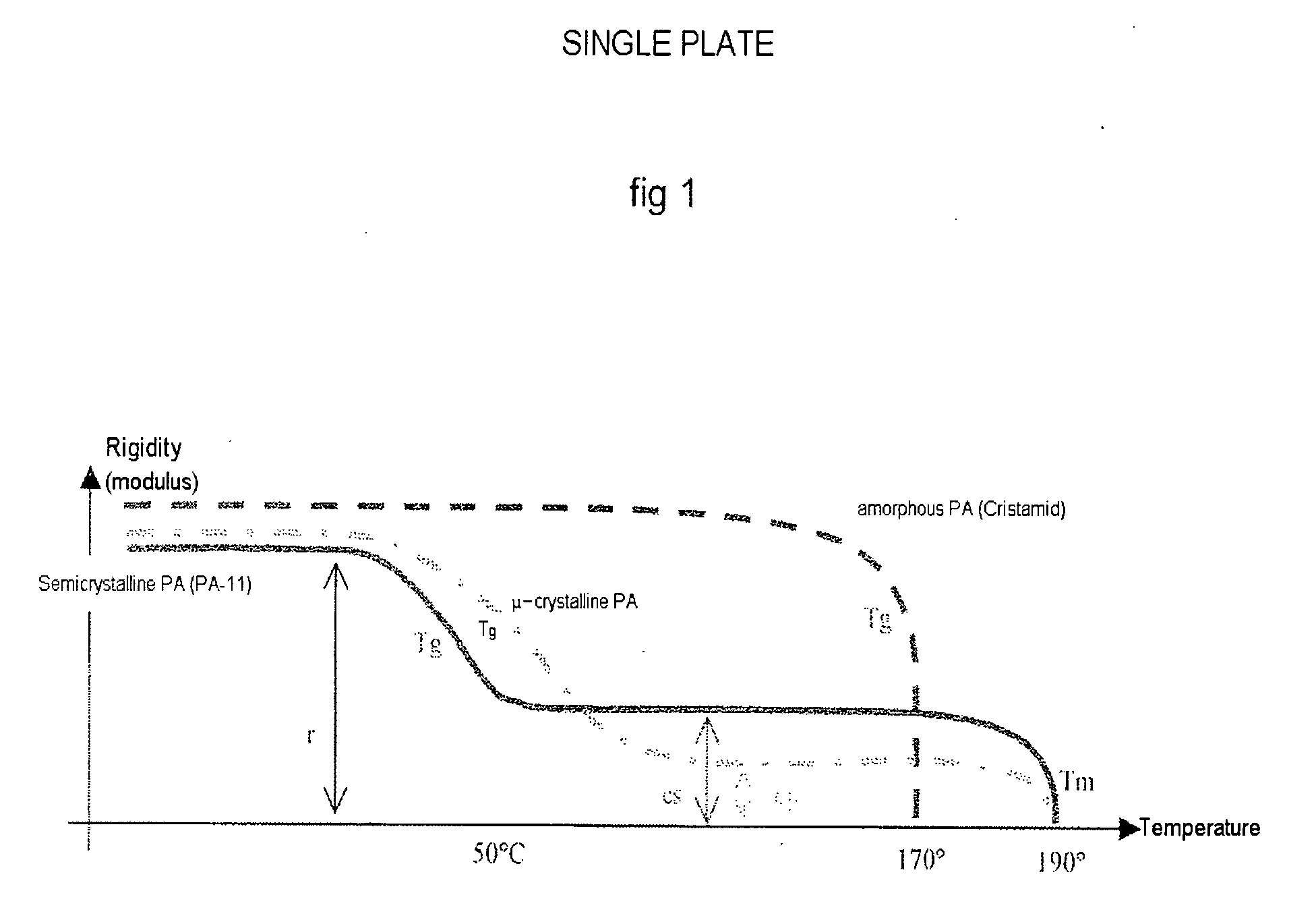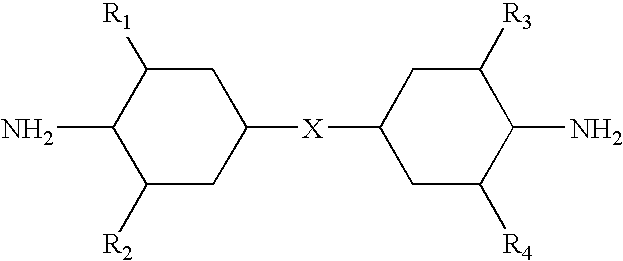Use of a microcrystalline polyamide to obtain a particular surface finish
a microcrystalline polyamide and surface finish technology, applied in the direction of synthetic resin layered products, textiles and papermaking, lamination, etc., can solve the problems of complex texturizing surface, unsuitable for faithful retranscribing of the surface finish and feel of the mould, and unsuitable for fulfilling the role of protecting the decorated object, etc., to achieve better chemical and physical resistance, superior chemical resistance (to stress cracking) and physical resistance, and high performance
- Summary
- Abstract
- Description
- Claims
- Application Information
AI Technical Summary
Benefits of technology
Problems solved by technology
Method used
Image
Examples
Embodiment Construction
[0050] By way of examples of microcrystalline polyamides, mention may be made of the transparent composition comprising, by weight, the total being 100%:
[0051] 5 to 40% of an amorphous polyamide (B) that results essentially from the condensation: [0052] either of at least one diamine chosen from cycloaliphatic diamines and aliphatic diamines and of at least one diacid, chosen from cycloaliphatic diacids and aliphatic diacids, at least one of these diamines or diacid units being cycloaliphatic, [0053] or of a cycloaliphatic α,Ω-aminocarboxylic acid, [0054] or of a combination of these two possibilities, and [0055] optionally of at least one monomer chosen from α,Ω-aminocarboxylic acids or the possible corresponding lactams, aliphatic diacids and aliphatic diamines;
[0056] 0 to 40% of a flexible polyamide (C) chosen from copolymers having polyamide blocks and polyether blocks, and copolyamides;
[0057] 0 to 20% of a compatibilizer (D) for (A) and (B);
[0058] 0 to 40% of flexible modif...
PUM
| Property | Measurement | Unit |
|---|---|---|
| Temperature | aaaaa | aaaaa |
| Temperature | aaaaa | aaaaa |
| Temperature | aaaaa | aaaaa |
Abstract
Description
Claims
Application Information
 Login to View More
Login to View More - R&D
- Intellectual Property
- Life Sciences
- Materials
- Tech Scout
- Unparalleled Data Quality
- Higher Quality Content
- 60% Fewer Hallucinations
Browse by: Latest US Patents, China's latest patents, Technical Efficacy Thesaurus, Application Domain, Technology Topic, Popular Technical Reports.
© 2025 PatSnap. All rights reserved.Legal|Privacy policy|Modern Slavery Act Transparency Statement|Sitemap|About US| Contact US: help@patsnap.com


